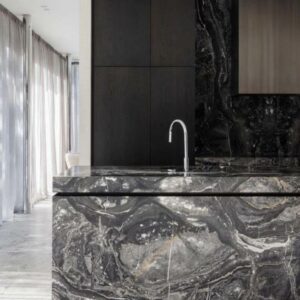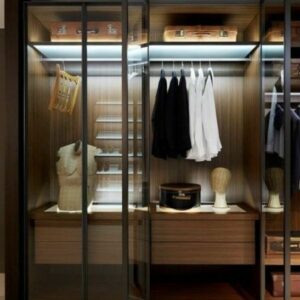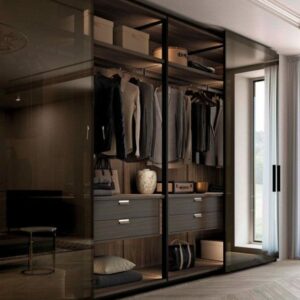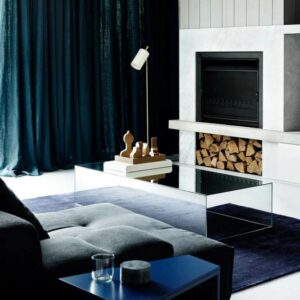How to design a shop for a clothing brand
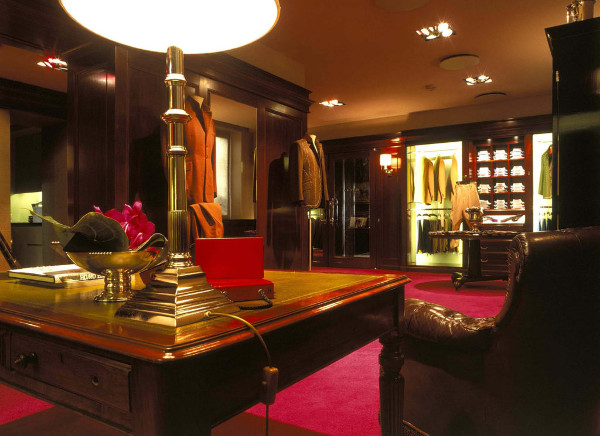
Shopping habits in the clothing sector have changed rapidly and profoundly over the last twenty years. Even if online shopping is now an established habit for many customers, the shop remains the reference space for welcoming customers, presenting its offer and communicating the brand’s philosophy and values in a precise way.
Designing a shop for a clothing brand means transferring the essence of the brand into the exhibition space and giving customers a rewarding and memorable shopping experience.
When designing a shop for a clothing brand, several factors must be taken into account that influence the way the space will be organised. One of the first elements to consider is the brand identity, defined by the guiding values of the brand, the characteristics of the offer and the type of public it wants to involve. From this point of view, the design of a childcare shop will naturally be different from that of an urban style clothing shop, i.e. one aimed at a young audience.
Especially if the brand has an international presence, social and cultural factors, which may influence customer behaviour, have to be taken into account when planning the shop and defining the interior design. Indeed, buying habits, consumer psychology and the perception of messages and values can change in different regions of the world. It would therefore be a mistake not to take them into account when working on the definition of the space that will welcome your customers.
Interpreting brand identity through display routes, interior design and lighting
Once you have clarified what emotions and atmosphere the brand wants to convey in its shops, you can move on to phase two of the design process. This means defining how the space inside the shop will be organised and how the products will be displayed.
It is important to clearly define from the outset what the main display points will be, what the customer journey is and how the buying process will take place. At this stage, it must be ensured that the customer’s route between the display area, the fitting rooms and the checkout area follows a logical sequence. Nothing should be left to chance, including the furnishings. It is just as important to ensure that there is enough space for every customer to move around the shop easily.
The organisation of the display areas depends very much on the type of product and customer support offered by the brand. For example, in a shop selling casual clothing and aimed at a young audience, the customer expects to be able to move around the shop independently and to observe and choose the goods displayed along the walls and islands. In contrast, in a shop that offers luxury and elegant clothing, it is the sales staff who are responsible for presenting the collections to the customers, guiding them through the latest fashions and advising them. In such a shop, the design can include a wall display of goods and the strategic use of islands to highlight the top products.
No less important than the internal display of clothing and accessories is the lighting system. Lighting, both natural and artificial, plays an essential role in presenting the brand offering and highlighting the lines and details of the garments. The temperature of the lighting also needs to be carefully defined as it influences the perception of the customer. Massive use of cold lighting can be useful to enhance products and convey a feeling of exclusivity. On the other hand, warm lighting is the ideal choice if the aim is to create a welcoming and reassuring environment.
The philosophy of the brand and its objectives also influence the choice of materials used for the interior design. The colours and materials selected for the shop should be designed according to the target group and brand identity. In the case of a shop of a clothing brand which promotes a new paradigm of consumption which respects the environment and nature, the interior design could focus on the use of wood and recycled materials. For a children’s clothing brand, on the other hand, the interior should be designed to welcome children in a colourful and playful environment, possibly including play areas.
The way in which the interior spaces of the shops of a clothing brand are organised contributes to making the brand recognisable and memorable. In a good interior design project, layout and fittings are designed to offer the customer a unique shopping experience
Choose a high-level carpentry.
We have over 50 years of experience! Contact Us
“Italian Interior Design sincew 1968”.
 Il Piccolo is a luxuryjoinery, specialised in interior design. We are a recognized brand, spokesman of the made in Italyall over the world.
Il Piccolo is a luxuryjoinery, specialised in interior design. We are a recognized brand, spokesman of the made in Italyall over the world.
For over 50 years, wehavebeenserving the mostdemanding clients and the most innovative designers. We are reliableinterpreters of the projects of architecturestudios, whichwe work alongsideasconsultants on the latest in industrial design and asscouts for uniquepieces to be included in furnishings, from modernantiques to contemporary art.
Our clients have a personal and directrelationship with us: thisgivesthem the certainty of achievingtheirobjectives, meeting tight deadlines and solving last-minute problems. The project leader, whoisalwaysone of the owners, alsotakes care of the logistics.
Each stage follows a precise path and isdocumented. From the plans to the prototyping, so that the best choices can be made from the outset: materials, colours, woodfinishes and polishes, stucco effects. By contactingus, you can be sure of excellentcustomer care. CONTACT US!
